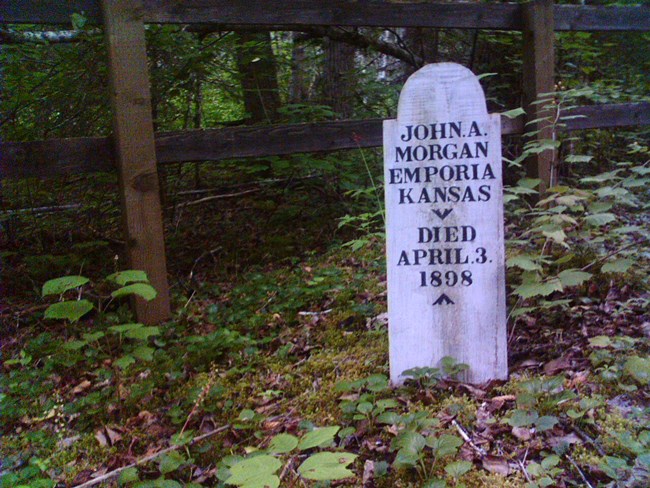|
Visit our keyboard shortcuts docs for details
A short video about the Palm Sunday Avalanche and the Slide Cemetery where the victims are buried. 
NPS photo Cemeteries are a fascinating way to learn about the people that lived in or passed through an area. There are number of cemeteries in Skagway and Dyea. The Slide CemeteryThough the Slide Cemetery is not part of Klondike Gold Rush National Historical Park, it is accessed through the park. A few graves near the cemetery are within park boundaries and contain interpretive signs. A short footbridge leads you off park property and into the Municipality owned Slide Cemetery. It is located approximately 10 miles from Skagway, Alaska near the old Dyea Townsite. On April 2, 1898 a large avalanche on the Chilkoot Trail, known as the Palm Sunday Avalanche, killed over 60 stampeders. Many of them were interred near the town of Dyea. Visiting the Slide Cemetery can be part of any trip to Dyea. The Slide Cemetery is near the historic townsite. Directions to Dyea can be found on our Directions & Transportation page. The Gold Rush CemeteryThis is the oldest cemetery in Skagway and the easiest to visit. This was the first cemetery for the City of Skagway and many of our famous Gold Rush characters are interred here including local kingpin Jefferson "Soapy" Smith and early tourism promoter Martin Itjen and his "world's largest gold nugget." A list of people interred at the Gold Rush Cemetery is available for download (accessible PDF 344 KB). A trip to the Gold Rush Cemetery is a short walk from town and can be coupled with scenic Lower Reid Falls. It is also possible to take the local SMART bus shuttle to a stop 1/2 mile from the cemetery. Many commercial tours of town also include stops at the cemetery. The Pioneer CemeteryThis cemetery was used by the town of Skagway after the Gold Rush in the early days of the frontier community. A list of those interred is available for download (accessible PDF 343 KB). 
NPS photo/Karl Gurcke |
Last updated: July 25, 2024
